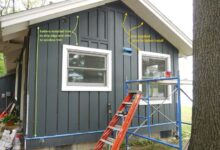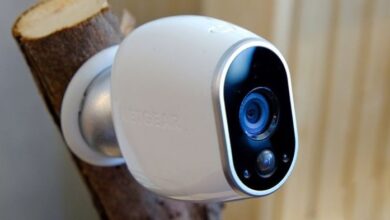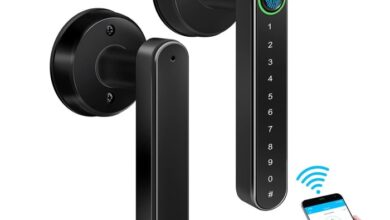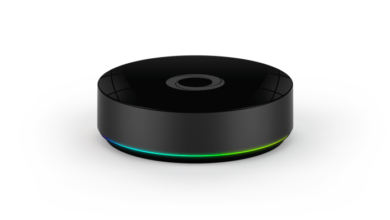WiFi Smart Plugs Your Smart Home Upgrade
WiFi Smart Plugs are revolutionizing how we interact with our homes. From simple on/off control to sophisticated automation, these unassuming devices offer a surprising level of convenience and efficiency. This deep dive explores everything you need to know about WiFi smart plugs, from choosing the right model to harnessing their full potential for a smarter, more energy-conscious lifestyle.
We’ll cover setup, troubleshooting, advanced features, and even some creative uses you might not have considered.
Imagine effortlessly controlling your lamps, fans, and even holiday lights from anywhere in the world, all with a simple tap on your smartphone. That’s the power of WiFi smart plugs. This guide unpacks the technology behind these versatile devices, comparing different types, exploring seamless integration with other smart home ecosystems, and offering practical advice for maximizing their benefits. Get ready to unlock the full potential of your home’s electrical system.
Defining WiFi Smart Plugs
WiFi smart plugs are transforming how we interact with our homes, offering a convenient and affordable way to control everyday appliances remotely. These small devices bridge the gap between our traditional electrical outlets and the increasingly connected world of smart home technology, providing a simple yet powerful method to automate and monitor energy consumption. They represent a crucial entry point for many individuals venturing into the realm of smart home automation.WiFi smart plugs essentially act as remote-controlled power switches.
They allow you to turn electrical devices on or off from anywhere with an internet connection, using a smartphone app or voice assistant. This simple functionality opens up a wide range of possibilities, from scheduling lights to turn on at sunset to remotely controlling appliances like fans or coffee makers. This level of control offers both convenience and energy-saving potential.
Types of WiFi Smart Plugs
The market offers a variety of WiFi smart plugs catering to diverse needs and setups. Single-outlet smart plugs are the most common type, offering control over a single appliance. Multi-outlet smart plugs provide control over multiple devices from a single unit, offering a more compact solution for managing several appliances. Finally, smart power strips integrate multiple smart outlets into a single unit, often with surge protection, further enhancing convenience and safety.
The choice depends on individual requirements and the number of appliances needing smart control.
Comparison with Other Smart Home Devices
While WiFi smart plugs are a standalone smart home solution, they often integrate seamlessly with other smart home ecosystems. Unlike dedicated smart appliances (e.g., smart refrigerators, smart ovens) which have built-in intelligence, smart plugs provide smart functionality toany* existing appliance. They differ from smart lighting systems, which often offer more sophisticated features like color-changing capabilities, by focusing solely on on/off control.
However, their affordability and broad compatibility make them a valuable addition to any smart home setup, even complementing more sophisticated devices. They act as a foundational layer of smart home control, bringing smart functionality to even the most basic appliances.
Comparison of Popular WiFi Smart Plug Brands
The following table compares three popular brands of WiFi smart plugs, highlighting key features and price points. These prices are approximate and can vary depending on retailer and specific model. Consider factors like compatibility with your existing smart home ecosystem and desired features when making your selection.
| Feature | Brand A (Example: TP-Link) | Brand B (Example: Kasa) | Brand C (Example: Amazon) |
|---|---|---|---|
| Price (per unit) | $15 – $25 | $18 – $30 | $20 – $35 |
| Number of Outlets | Single, Multi-Outlet | Single, Multi-Outlet | Single, Multi-Outlet |
| Smart Home Compatibility | Alexa, Google Assistant | Alexa, Google Assistant | Alexa, Google Assistant |
| Energy Monitoring | Yes (some models) | Yes (some models) | Yes (some models) |
Setting up and Using WiFi Smart Plugs
Stepping into the world of smart home technology often begins with a simple yet powerful device: the WiFi smart plug. These unassuming gadgets transform ordinary electrical appliances into smart, controllable components of your home network, offering convenience and energy-saving potential. Understanding how to set them up and use them effectively is key to unlocking their full capabilities.
WiFi Smart Plug Setup: A Step-by-Step Guide
Setting up a WiFi smart plug is generally straightforward, requiring minimal technical expertise. Most plugs follow a similar process, though specific steps might vary slightly depending on the brand and model. Consistency across brands is increasing, making setup more intuitive for consumers.
- Download the Mobile App: Begin by downloading the manufacturer’s dedicated mobile application from your smartphone’s app store (Google Play or Apple App Store). These apps serve as the primary interface for controlling your smart plugs. Many apps offer similar functionalities, including scheduling, timers, and remote control.
- Plug in the Device: Insert the smart plug into a standard wall outlet. Ensure the outlet is easily accessible, as you’ll need to interact with the plug during the setup process. Avoid placing the plug behind furniture or in hard-to-reach locations.
- Connect to Your WiFi Network: The smart plug will usually have a physical button or indicator light. Follow the app’s instructions to put the plug into pairing mode, typically involving pressing and holding the button for a specific duration. The app will guide you through connecting the plug to your home’s WiFi network. You will need to enter your WiFi password.
- Device Registration: Once the plug is detected by the app, you’ll be prompted to register it to your account. This usually involves assigning a name to the device for easy identification and management within the app. Consider using descriptive names like “Living Room Lamp” or “Kitchen Coffee Maker” for efficient organization.
- Testing and Control: After successful registration, test the plug’s functionality. Use the app to turn the connected device on and off. Verify that the commands are executed correctly and that the plug responds reliably. Most apps provide immediate feedback on the device’s status.
Mobile Applications for Smart Plug Control
A variety of mobile applications are available for controlling smart plugs, each offering a unique set of features and user interfaces. Some apps provide basic on/off functionality, while others offer advanced features such as scheduling, energy monitoring, and integration with other smart home devices. The app’s user-friendliness significantly impacts the overall user experience. For example, Kasa Smart by TP-Link and Smart Life are popular choices known for their broad compatibility and intuitive design.
These apps often support multiple devices from various manufacturers, simplifying the management of a larger smart home ecosystem.
Controlling Smart Plugs: Methods and Considerations
Smart plugs offer multiple control methods, providing flexibility and convenience to users. The most common methods include app-based control, voice assistant integration, and, in some cases, physical buttons on the device itself. Each method offers unique advantages and disadvantages.App-based control provides precise control and scheduling capabilities. Voice assistants like Amazon Alexa and Google Assistant offer hands-free operation, making them ideal for tasks requiring minimal interaction.
However, voice control relies on reliable internet connectivity and accurate voice recognition. Physical buttons, if available, offer a fallback option when other methods fail, providing a simple on/off control.
WiFi Smart Plug Setup Flowchart
Imagine a flowchart starting with “Plug in Smart Plug.” This leads to two branches: “Plug successfully recognized?” A “yes” branch proceeds to “Open Mobile App,” then to “Select WiFi Network,” then “Enter WiFi Password,” and finally to “Device Registered and Ready.” A “no” branch leads to troubleshooting steps, such as checking the outlet, restarting the plug, or contacting support.
This visual representation clearly Artikels the setup process and potential issues.
Features and Benefits of WiFi Smart Plugs
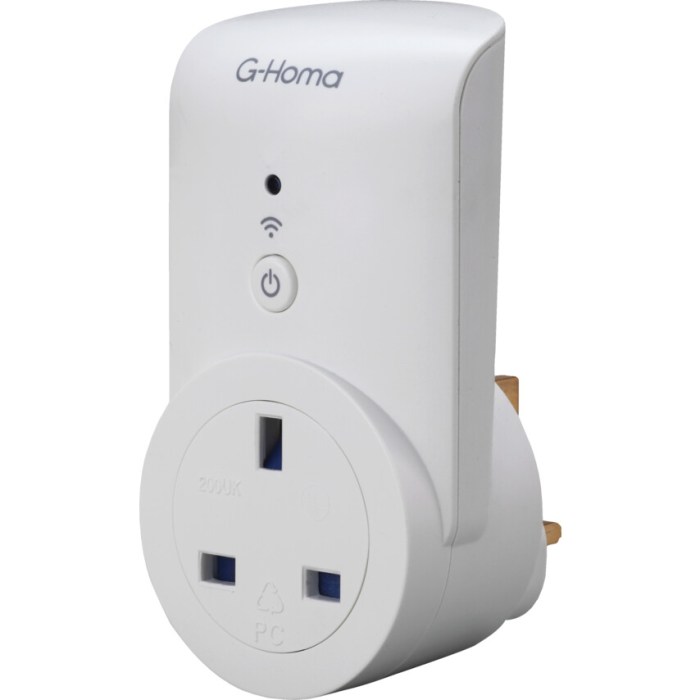
Smart WiFi plugs have rapidly evolved from simple on/off switches to sophisticated devices offering a range of functionalities that enhance convenience, improve energy efficiency, and even boost home security. This section delves into the key features and substantial benefits these devices bring to modern homes, highlighting their impact on various aspects of daily life.
Energy Monitoring and Management
Many modern smart plugs include built-in energy monitoring capabilities. This feature allows users to track the real-time energy consumption of connected devices. By visualizing energy usage patterns, homeowners can identify energy-intensive appliances and implement strategies to reduce their overall electricity bills. For instance, a smart plug monitoring a rarely-used coffee maker might reveal that it’s consuming a significant amount of “phantom load” even when switched off.
This data empowers users to make informed decisions, such as unplugging devices completely when not in use or switching to more energy-efficient alternatives. Data collected over time provides a comprehensive picture of energy consumption, leading to substantial long-term savings.
Scheduling and Automation
Smart plugs offer the ability to schedule the on/off times of connected devices. This is incredibly useful for automating tasks and optimizing energy use. Imagine automatically turning off your lamps every night at 11 PM, or preheating your oven remotely before you arrive home. This level of automation not only saves energy by preventing devices from running unnecessarily, but also adds a layer of convenience to daily routines.
Furthermore, integrating smart plugs with other smart home systems allows for even more sophisticated automation scenarios, creating a truly interconnected and efficient home environment. For example, a smart plug could turn on a bedroom lamp at sunrise based on data from a smart weather station.
Remote Control and Accessibility
One of the most compelling features of smart plugs is the ability to control connected devices remotely via a smartphone app or voice assistant. This feature offers significant flexibility and convenience. Whether you’re at work, on vacation, or simply across the room, you can easily turn appliances on or off with a tap or voice command. This capability is especially useful for safety and security.
For instance, you could remotely turn off a space heater if you suddenly remember you left it on while leaving for work, potentially preventing a fire hazard. This level of control provides peace of mind and enhances home safety.
Security Considerations and Mitigation
While smart plugs offer numerous advantages, it’s crucial to address the security implications. These devices connect to your home Wi-Fi network and can potentially be vulnerable to hacking if not properly secured. Strong passwords, regular software updates, and choosing reputable brands are crucial steps in mitigating these risks. Using a secure Wi-Fi network with robust encryption is also essential.
Furthermore, regularly reviewing the permissions granted to the smart plug’s app can help prevent unauthorized access. By prioritizing security best practices, homeowners can minimize the risks associated with smart plug usage and enjoy the benefits without compromising their network’s security.
Benefits in Different Areas of the Home
Smart plugs offer numerous advantages throughout the house. Understanding these benefits in different areas can help you maximize their potential.
- Living Room: Control lighting and entertainment systems for optimal ambiance and energy efficiency. Imagine setting a scene for movie night with a single tap, automatically dimming the lights and turning on the TV.
- Bedroom: Automate bedside lamps, fans, and other devices for improved sleep quality and energy conservation. Program your fan to turn on at a specific time for a cool and comfortable sleep environment, then automatically switch it off in the morning.
- Kitchen: Control appliances like coffee makers, slow cookers, and even ovens for precise timing and energy management. Pre-heat your oven remotely while still at work, ensuring a hot meal is ready upon arrival, while minimizing energy waste.
Troubleshooting Common WiFi Smart Plug Issues
Smart plugs, while incredibly convenient, can sometimes present connectivity challenges. Understanding the common issues and their solutions can significantly improve your smart home experience and minimize frustration. This section provides a practical troubleshooting guide to help you resolve problems quickly and efficiently. We’ll cover connectivity problems, unresponsive plugs, app malfunctions, and hardware issues, equipping you with the knowledge to regain control of your smart devices.
Connectivity Issues
Connectivity problems are among the most frequent issues encountered with WiFi smart plugs. These problems typically stem from issues with the WiFi network itself, the plug’s configuration, or interference from other devices. A strong and stable WiFi signal is paramount for reliable operation.
| Problem | Solution |
|---|---|
| Plug not connecting to WiFi | Ensure your router is functioning correctly and your WiFi password is entered accurately in the smart plug app. Try restarting both the plug and your router. Check for signal strength near the plug’s location; consider moving the plug closer to the router if necessary. |
| Intermittent connectivity | Investigate potential sources of WiFi interference, such as microwaves or other electronic devices. Consider changing the WiFi channel on your router to reduce interference. Ensure the plug is not too far from the router. |
| Slow response times | A congested network can lead to slow response times. Try limiting the number of devices connected to your WiFi network simultaneously. Restart your router to clear any temporary network issues. Check for firmware updates for your smart plug. |
Unresponsive Plugs
An unresponsive smart plug may indicate a problem with the device itself, its connection to the power supply, or even a software glitch. Addressing these possibilities systematically is key to resolving the issue.
| Problem | Solution |
|---|---|
| Plug unresponsive to app commands | Try restarting the plug by unplugging it from the power outlet and plugging it back in. Check your internet connection and ensure the smart plug app is up-to-date. If the problem persists, reset the plug to factory settings (see below). |
| Plug not powering connected device | Ensure the plug is securely plugged into both the wall outlet and the device you’re trying to control. Check the power outlet itself to ensure it’s working correctly. Inspect the plug for any visible damage. |
App Malfunctions
Issues with the smart plug app can range from minor glitches to more significant problems. These can often be resolved by simple troubleshooting steps.
Check what professionals state about Home Automation Systems and its benefits for the industry.
| Problem | Solution |
|---|---|
| App unable to connect to plug | Check your internet connection. Restart your phone or tablet. Ensure the app is updated to the latest version. Try reinstalling the app. |
| App displaying incorrect status | Restart the smart plug. Check the app’s settings to ensure it’s properly configured. If the problem continues, contact the app’s support team. |
Resetting a WiFi Smart Plug to Factory Settings
Resetting your smart plug to its factory settings is a valuable troubleshooting step that can resolve many issues. This process erases all previous configurations and settings, effectively returning the plug to its initial state. Most smart plugs have a small reset button, often located on the side or bottom. Press and hold this button for several seconds (usually around 5-10 seconds) until the indicator light blinks or changes color, indicating a successful reset.
After resetting, you will need to reconfigure the plug through your smart home app.
Potential Hardware Problems, WiFi Smart Plug
While less common, hardware issues can sometimes cause problems with your smart plug. These might include internal component failures or physical damage to the plug itself. If you suspect a hardware problem, inspect the plug carefully for any signs of damage, such as cracks, burns, or loose connections. If the plug is exhibiting unusual behavior, such as overheating or emitting strange noises, it’s best to discontinue use and contact the manufacturer for assistance or replacement.
A damaged smart plug should never be used, as it poses a potential fire hazard.
Advanced Applications and Integrations
Smart plugs offer far more than simple on/off control. Their true power lies in their ability to integrate seamlessly with other smart home devices and platforms, unlocking a world of automation and remote management possibilities. This level of integration transforms a simple electrical outlet into a powerful node within your connected home, significantly enhancing convenience, security, and energy efficiency.
Let’s delve into the advanced applications and integrations that elevate smart plugs beyond basic functionality.
Smart Home Ecosystem Integration
WiFi smart plugs are designed for compatibility with major smart home ecosystems like Amazon Alexa and Google Home. This integration allows voice control, enabling users to switch appliances on or off using simple voice commands. For example, saying “Alexa, turn off the living room lamp” will effortlessly control a smart plug connected to that lamp. Beyond voice control, these integrations often provide access to advanced features like scheduling and automation within the respective smart home apps, offering a centralized control hub for all your connected devices.
This streamlined approach simplifies home management and creates a truly integrated smart home experience.
Automating Home Lighting and Appliances
Smart plugs excel at automating tasks, particularly home lighting and appliance control. Pre-programmed schedules can automatically turn lights on and off at specific times, simulating occupancy even when you’re away, thereby enhancing home security. Similarly, appliances like coffee makers can be scheduled to start brewing before you wake up, or air conditioners can be pre-cooled before you arrive home.
This automation not only adds convenience but also contributes to energy savings by optimizing appliance usage. Imagine the convenience of your lights dimming automatically at sunset, creating a relaxing atmosphere, all managed by a simple smart plug.
Remote Monitoring and Control of Devices
One of the most compelling features of smart plugs is their ability to provide remote monitoring and control. Whether you’re at work, on vacation, or simply in another room, you can check the status of connected devices and control them using a smartphone app. This is particularly useful for checking if you left an appliance on or for remotely turning on a fan to cool down a room before arriving home.
This level of control offers peace of mind and allows for proactive management of energy consumption. Consider the scenario of remotely switching off a space heater before leaving for a trip, preventing a potential fire hazard and saving energy.
Creative Uses Beyond Basic Appliance Control
The applications of smart plugs extend far beyond basic appliance control. They can be used to monitor the energy consumption of individual devices, helping identify energy hogs and optimize usage patterns. Furthermore, they can be incorporated into more complex automation scenarios, such as triggering other smart home devices based on the status of a smart plug. For instance, a smart plug connected to a motion sensor could automatically turn on a light when movement is detected.
This kind of advanced automation opens up a wide range of possibilities for creating a truly personalized and responsive smart home environment. Think about using smart plugs to automatically turn on a holiday light display at dusk, creating a festive atmosphere with minimal effort.
Illustrative Examples of Smart Plug Usage: WiFi Smart Plug
Smart plugs, those unassuming little devices, offer a surprising array of functionalities beyond simple on/off switching. Their ability to automate and control power to various appliances unlocks a world of convenience, security enhancements, and energy savings. Let’s explore some compelling examples.
Smart Plug Enhancing Home Security
Imagine this: you’re away on vacation, and you want to give the impression that someone is home. A smart plug connected to a lamp in your living room, programmed via a mobile app, can randomly switch the lamp on and off throughout the day. This simulates occupancy, deterring potential burglars who might otherwise target an unoccupied house. The benefit extends beyond simple deterrence; the app provides remote monitoring, allowing you to check the status of the lamp and even adjust its schedule from anywhere with an internet connection.
This proactive approach adds a layer of security that traditional lighting systems can’t match, offering peace of mind even when you’re miles away. The added cost of the smart plug is significantly less than the potential cost of a burglary.
Smart Plug Promoting Energy Savings
Let’s consider a scenario with a frequently used appliance, like a space heater. Instead of leaving it running constantly, a smart plug allows for precise control. You can program it to switch on only when needed, say, during specific hours or when the room temperature drops below a certain threshold. This eliminates wasted energy when the heater is unnecessary.
For example, if the heater runs for 8 hours daily at 1500 watts, and the smart plug reduces its runtime by 4 hours per day, the daily energy savings would be 6 kilowatt-hours (kWh). Assuming an average electricity cost of $0.15 per kWh, this translates to a daily savings of $0.90, or approximately $27 per month, representing a significant reduction in your energy bill.
This is a practical and easily implemented solution to reduce energy consumption.
Smart Plug Increasing Convenience
Consider the everyday hassle of remembering to switch off appliances. A smart plug connected to a coffee maker allows you to schedule it to brew your coffee precisely when you wake up. No more fumbling around in the dark or rushing to get your caffeine fix. Beyond the coffee maker, you can program multiple smart plugs to automate other tasks.
For instance, you could schedule a fan to switch on in the afternoon to cool down your room before you arrive home from work. This seemingly small convenience adds up over time, streamlining your daily routine and reducing mental load. The ability to control these devices remotely also offers convenience during unexpected situations, allowing you to turn appliances off if you forget, even when you are not at home.
Final Review
Ultimately, WiFi smart plugs represent a significant step towards a more connected and efficient home. They’re not just about remote control; they’re about simplifying your daily routine, saving energy, and enhancing home security. By understanding their capabilities and potential pitfalls, you can confidently integrate these devices into your smart home ecosystem and enjoy the numerous benefits they offer. From basic appliance control to complex automation scenarios, the possibilities are virtually limitless.
So, take the plunge, embrace the smart home revolution, and transform your living space into a haven of convenience and control.



